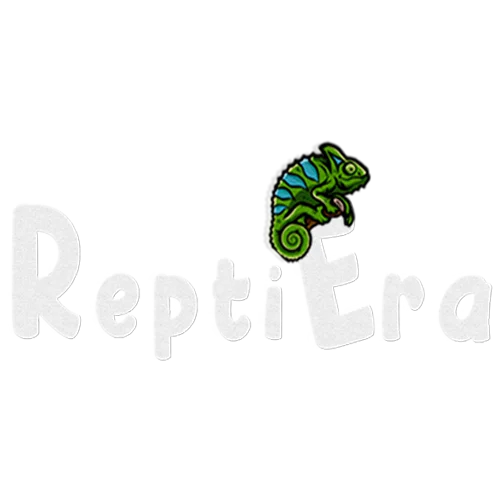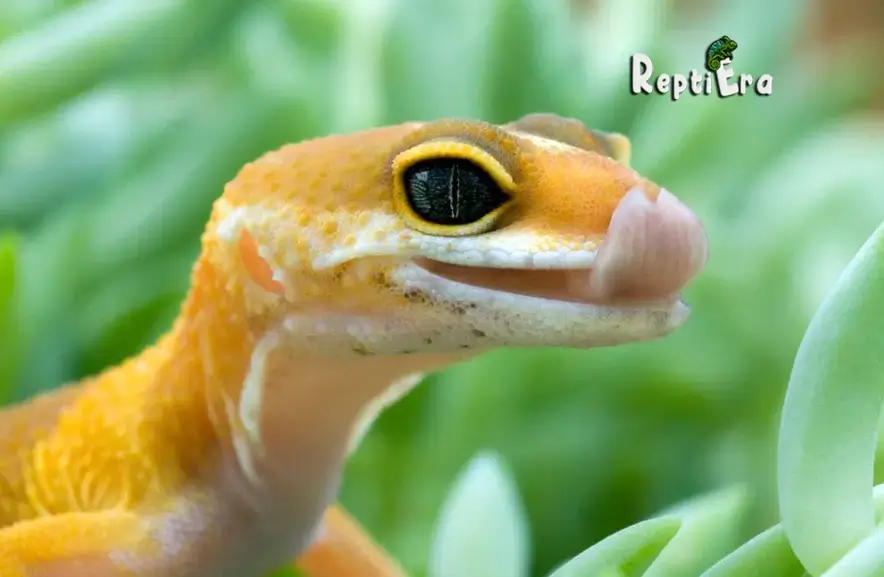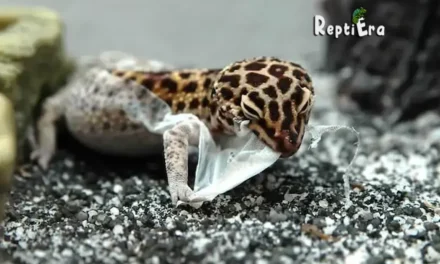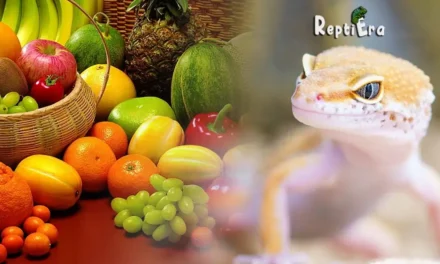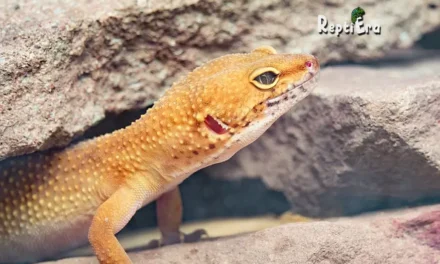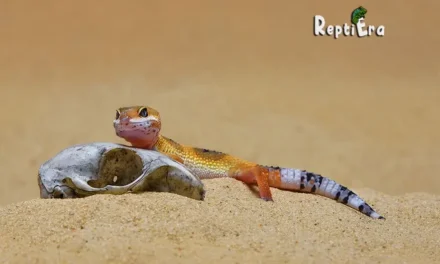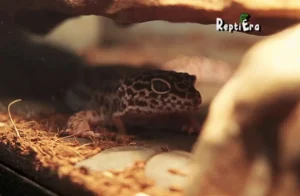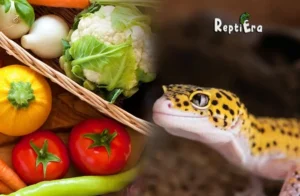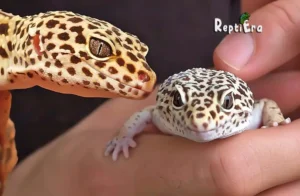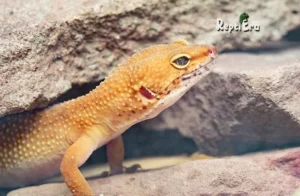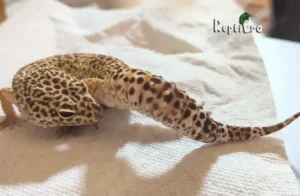As an avid observer of Leopard geckos, one natural behaviour I frequently saw was their habit of licking their lips. This action, often misunderstood, is not just a trivial gesture. In the wild, like humans who moisten their lips in a dry environment, these reptiles, affectionately known as Leo, use lip-licking to adapt to their environment.
Why Do Leopard Geckos Lick Their Lips?
However, this seemingly innocuous behaviour can be an early sign of health problems. Conditions such as mouth lesions, often stemming from abscesses or mouth rot, and more serious ailments like Metabolic Bone Disease, could be lurking beneath this routine act.
When a Leo licks its lips, especially during shedding, it’s generally a good sign of self-grooming. But, if you notice decreased appetite or other unusual symptoms accompanying the lip-licking, it could be a bad sign, signifying a more serious, even morbid underlying issue. It’s essential to distinguish these subtle differences to prevent escalation. For those seeking more information, reading up on Leopard gecko care is invaluable. Understanding these nuances gives a better sense of when to be concerned or reassured about your pet’s health.
Table of Contents
Nose Licking And Lip Licking In Leopard Geckos
In the fascinating world of leopard gecko care, a topic that often arises for discussion is their lip-licking behaviour, which interestingly extends to licking their nose as well. As both a long-time and experienced reptile enthusiast, I’ve observed and come to be quite familiar with this behaviour, understanding what it looks like and what it signifies.
This simple action, often mistaken by some owners for other behaviours, actually serves multiple possible reasons. Surprised to find out, many realize that what they once thought was an odd or random act is, in fact, a natural and essential part of their pet’s grooming and sensory exploration. This insight into such a common yet misunderstood aspect of leopard gecko behaviour not only enhances our understanding of these creatures but also enriches our experience as caretakers.
Jacobson’s Organ
In the intriguing world of Leopard geckos, a key aspect that fascinates many, including myself as a long-time reptile enthusiast, is the function of Jacobson’s organ, also known as the vomeronasal organ. This remarkable ability to detect and decipher odour particles through moisture is not just limited to determining the environment around them, but extends to their taste preferences, especially when identifying prey.
Geckos use this organ to discern the characteristics of their feeder, whether it be dead or alive, and this is not just restricted to insects but spans across different tetrapod groups like mammals, amphibians, and other reptiles. This sensory capability is reminiscent of the flehmen response seen in animals like snakes, where they utilize their tongues and mouths to pick up on pheromones and scents, gathering crucial information about their current surroundings.
Understanding this complex behaviour in Leopard geckos offers a deeper insight into how these fascinating creatures interact with their world, showcasing the intricate and often overlooked aspects of reptilian senses.
What It Looks Like
When delving into the lip-licking behaviour of leopard geckos, it’s characterized by a series of delicate movements. Typically, it involves a slight, sometimes wide opening of the mouth to expose just the tip of the tongue – it’s not the entire tongue that sticks out. This action is quick, where they quickly drag their tongue across their lips, often in one direction, then pull back, sometimes in a continuous back-and-forth motion before they return it inside. This process goes by so quickly that while observing a Leo closely, you might miss it. Capturing this on video reveals the different ways in which Leos perform this subtle, yet essential, grooming behavior.
Reasons: Why Do Leopard Geckos Lick Their Lips
In various scenarios, you might observe a healthy leopard gecko licking its lips, a behaviour that has been explained through Scientific studies. This activity is increased immediately after eating as part of their grooming process. Research also suggests it plays a role in hunting and prey detection, helping to enhance their sensory experience and taste. Owners often notice it during shedding periods. Proper shedding requires adequate humidity, and the moisture from their lips helps to supply this on their face, mechanically helping them to remove loose pieces of skin.
Here are some additional natural behaviours involving lip-licking that leopard geckos might exhibit:
- Keeping their eyes clean and moist by licking
- Cleaning their femoral pores by licking after territorial marking
- Hydrating by licking water droplets from themselves or their owner
- Female geckos licking their vent post-mating or pre-egg laying
Related Post: WHY IS MY LEOPARD GECKO LICKING HIS BUM
1. Assessing Their Environment
In the intriguing world of leopard geckos, lip-licking behaviour is not just a habitual action but a way to determine and feel what’s happening in their environment. As discussed earlier, the use of Jacobson’s organ enables them to taste and gather information about their surroundings. This is particularly evident in controlled environments like enclosures, where Leo might become stressed due to changes.
Owners often observe their geckos licking their lips when people or other animals are outside, or if the enclosure has been recently opened. For example, introducing new feeders or a change in the enclosure setup can automatically trigger them to lick their lips. This behaviour is also noticeable in a different environment, like when a gecko is placed near a sink with warm water, allowing them to get a better feel of the new setting.
Moreover, in cases where lip licking occurs before, during, or after feeding, it’s generally considered normal and indicative of them doing well. However, be wary of signs like finding it hard to ingest their feeder, as this could be an indication of problems. We’ll discuss this more (but spoiler alert), it can be an early sign of issues like MBD (Metabolic Bone Disease). It’s also observed that they might lick their noses after a meal, as part of cleaning up. Understanding these behaviours enhances our ability to provide the best care for these fascinating creatures
2. Leopard Geckos That Are About To Shed Lick Their Lips Quite Often
Leopard geckos, particularly when they are nearing a shed, occasionally lick their lips more frequently. This behavior intensifies usually 1 to 2 days before the shedding process begins. As a gecko prepares to shed its skin, you might notice them focusing on their heads, using their mouths to loosen the skin in that area. This lip-licking is especially common in Younger geckos, who tend to shed more often than adults as they grow faster. The telling signs of shedding can be checked by observing several factors: the skin turning grey or pale, a decreased interest in food, and a less happy or enthusiastic demeanour towards play or being handled.
During this time, the wetness of their tongue helps to add moisture, making it easier for them to manage the shedding in the area around their mouth. The motion of their lip-licking behaviour not only aids in loosening the skin on their head but also helps to ease the overall process. For owners, observing this can worry them, but it’s a completely normal part of a leopard gecko’s life cycle. Taking a closer look at your Leo, you might also notice other foreign signs of impending shedding, but generally, this is okay and nothing to be concerned about.
Note: Keep in mind, when a Leo is about to shed, the head is often the last area to change – if it’s a different colour than the body, it has not changed yet. Seeing them licking their lips during this phase is considered entirely normal.
3. Hunting
Ordinarily, when leopard geckos engage in tongue-flicking and lip-licking during hunting, it aids in prey recognition and location. As slow, active foragers, these behaviours are essential for successful prey capture. From research studies I’ve read over my years as a reptile pet parent, it’s still somewhat uncertain how they differentiate between these actions, but theories by scientists help to distinguish this. Researchers have covered studies on reptile tongues, noting the distinction between these two tongue movements, and comparing their primary functions concerning hunting.
Also Read: CAN LEOPARD GECKOS EAT VEGGIES
Lip-Licking as a Sign of Leopard Gecko Health Issues
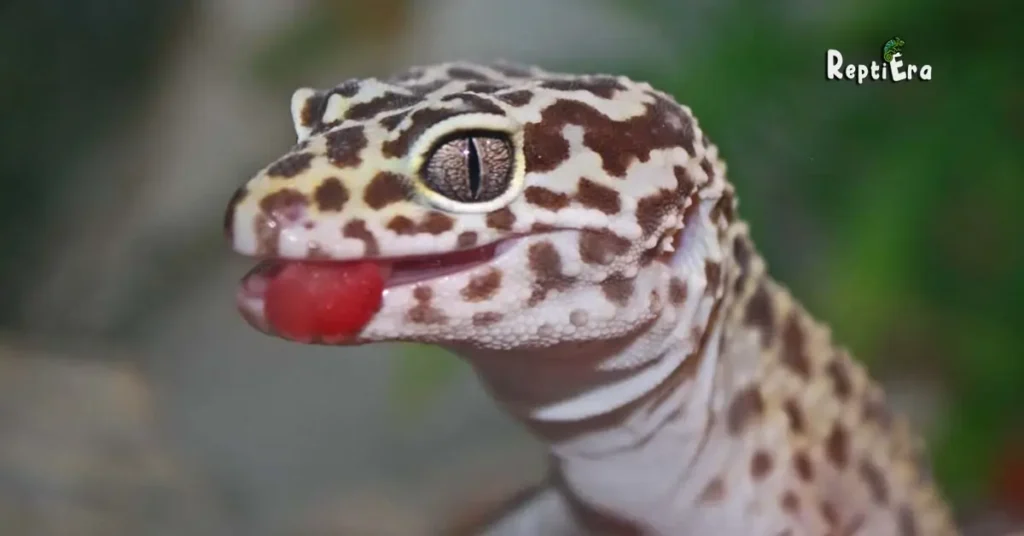
While a leopard gecko exhibiting its natural behaviour may occasionally include lip-licking, constant lip-licking could hint at an underlying health problem. To determine if this behaviour indicates something more sinister, symptoms should be evaluated beyond lip-licking, such as appetite, thirst, energy level, and changes in how they grasp and handle their food.
If they gingerly grasp their food or drop it frequently, these could be additional signs. When these changes are present alongside unusual lip-licking, it’s indicative of a potential health condition. In such cases, it’s recommended to inspect the gecko’s mouth, watch for any changes, and consult a veterinarian with any questions or concerns.
Oral Disease in Leopard Geckos
If you’re concerned about your leopard gecko licking its lips frequently, it’s recommended to take a closer look at its mouth for signs of oral disease. Upon discovering evidence of traumatic injury, inflammation, or infection, be aware that reptiles like leopard geckos can suffer from conditions such as mouth rot, also known as infectious ulcerative stomatitis. This type of infection can be caused by various agents, including bacteria, viruses, fungus, or parasites, and can stem from trauma, including thermal burns or injuries from live prey. Such conditions can precipitate oral infections, and in severe cases, they may progress to bone infections or abscesses.
Lip Licking In Leos Can Be A Sign For Mouth Rot
Stress frequently leads to mouth rot as it impairs the immune system of a leopard gecko. This weakened state allows bacteria to thrive and proliferate both within and around the gecko’s mouth.
Additional factors contributing to mouth rot include:
- Incorrect humidity levels
- Inappropriate temperature settings
- Presence of parasites
- Inadequate nutritional intake
- Excessive crowding
When a leopard gecko constantly licks its lips, it’s not always nothing to try and ignore. This could be an obvious sign of mouth rot, especially if accompanied by scabs or sores around the mouth – not normal for a healthy Leo. Mouth rot occurs when bacteria, often from sitting in unclean conditions, infiltrate even the smallest wounds, possibly at an early stage. Owners who have observed their geckos visibly wrong with constant scratching or rubbing of the area on the substrate or with their feet should be alert. These actions can cause tiny tears, which may then become infected.
Also Read: ARE LEOPARD GECKOS GOOD PETS?
How to Prevent Oral Disease
One of the more common health issues in a leopard gecko stems from improper animal husbandry, so decreasing the risk of oral injury that could progress to an oral infection is key. To minimize traumatic injuries, ensure their habitat is free from abrasive materials. Heat rocks and other direct heat sources should be avoided to prevent thermal burns. Housing only one male per habitat reduces aggressiveness, which can predispose them to injury.
Preventing mouth rot involves controlling exposure to infectious organisms, including bacteria and fungus. Maintaining an appropriate temperature gradient and humidity level in their environment is crucial for minimizing the development of harmful conditions.
Metabolic Bone Disease in Leopard Geckos
Excessive lip-licking in a leopard gecko can be a signal of Metabolic Bone Disease (MBD), also known as secondary nutritional hyperparathyroidism, a common bone disease in reptile practice. This condition occurs due to a calcium deficiency, inadequate levels of vitamin D3, or a lack of UVB light exposure. MBD causes the bones in the face and body to soften and distort, leading to what is often referred to as a rubber jaw or soft jaw.
Reptiles with MBD may lick their lips more frequently as part of the symptoms and signs of this illness, which are also associated with difficulty walking, decreased appetite, and low energy.
Nose And Lip Licking In Leopard Geckos Can Be An Early Sign Of Metabolic Bone Disease
When a leopard gecko habitually licks its lips, beyond reacting to the environment or enclosure conditions, it might be an early sign of Metabolic Bone Disease (MBD). MBD often occurs when the gecko is lacking in calcium or Vitamin D3, leading to weakened jaws that can’t properly close or manage the mouth and surrounding area. A quick test to check for MBD involves gently feeling the jaw to see if it’s spongy or soft.
Addressing this involves upping the intake of essential nutrients and consulting a vet if they struggle to ingest feeders or handle both big and small objects. Ensuring your gecko is not suffering from MBD is vital, and proper nutrition is key, which includes choosing the right feeders and dusting them with the necessary supplements.
How to Prevent Metabolic Bone Disease
Preventing metabolic bone disease in leopard geckos involves proper nutrition and housing. Their diet, primarily prey items like insects, crickets, and mealworms which are favourite foods, can be deficient in calcium. To address this, it’s advised for reptile owners to gut load and dust these foods at mealtime to ensure a healthy diet.
Additionally, leopard geckos require vitamin D3, but due to toxicity being possible, it’s recommended to use a calcium supplement without D3. Instead, get a UVB light, even though they are a nocturnal species with a unique ability to absorb calcium rapidly with less need for UV light. Supplementation in this manner helps in preventing oral disease and overall health issues.
Your Leopard Gecko Might Have An Abscess
Abscesses in leopard geckos can be tricky to spot, as they may stem from a bacterial infection, viral infection, or even parasites. Initially, abscesses manifest as swelling in the forming stage, often under the skin or near the pinkish membrane of the mouth, which can inflame over time. This condition is distinct but can be related to mouth rot. A key indicator is an increase in lip-licking behaviour. If your Leo starts to lick its lips with more frequency, it could be a clue that an abscess is forming, causing discomfort.
The 2 Main Sections of the Leopard Gecko Tongue
1 ‒ Foretongue
The anterior portion of a leopard gecko’s tongue, known as the Foretongue, is broad and wide with a median sulcus that divides the tongue into equal halves. Along the front and back are papillae; flat, leaf-shaped or foliate at the front and dome-shaped, thicker towards the sides of the tongue surface.
These steadily become taller towards the hindtongue. The foretongue is predominantly red or dark pink, with the tip seemingly curved or forked, often described as bifurcated. The posterior portion, or hindtongue, is anchored to the floor of the mouth by the frenulum, a fold of mucus membrane underneath.
2 ‒ Hindtongue:
The hindtongue is a distinct portion of the leopard gecko’s tongue, located deeper within the oral cavity. Unlike the broader foretongue, it is wider at the base and stretches towards either side of the larynx and glottis, extending into lobes towards the posterior limbs. Notably, this part of the tongue is characterized by tall, overlapping foliate papillae, which are identified as crucial in their sensory perception.
Tongue-Flicking and Lip-Licking: What is the Difference?
Leopard geckos exhibit two main types of tongue actions or lingual extensions.
Tongue-flicking: The tongue extends far beyond the lips, making contact with either the ground or the air directly in front of the leopard gecko.
Lip-licking: The tongue is brushed or moved across the scales near the lips or labials of the leopard gecko, typically around the front and sides.
A leopard gecko cannot perform these two lingual protrusions at the same time. Rather, it might first initiate tongue-flicking followed by lip-licking, or the other way around.
FAQs
Do You Know How Your Leopard Gecko’s Tongue Looks Like?
Leopard geckos have elongated tongues that are triangular in shape. The top surface, or the dorsal side, is relatively flat, contrasting with the underside, known as the ventral side. Interestingly, their taste buds are only located on this ventral surface, a unique feature of their anatomy.
What are the Primary Functions of Leopard Gecko Tongues?
Similar to other lizards, the tongue of leopard geckos plays a significant role in several aspects. It is crucial for investigative chemoreception, blending taste and smell, and aids in social and vocal communication. Additionally, their tongues are instrumental in feeding activities, particularly in prey capture and ingestion, among many other things.
When is Frequent Lip-Licking a Sign of Health Problems?
While lip-licking is a natural behaviour in leopard geckos, it can become an indication of injury or the onset of a disease, potentially leading to premature death if not treated properly. This behaviour becomes symptomatic when it manifests in conjunction with abnormal symptoms, such as noticeable changes in appetite, activity, or physical appearance.
- Challenges with grasping prey
- Incapacity to completely shut the mouth
- Weight reduction
- Inflammation and discoloration in mouth tissues
What does a leopard gecko licking mean?
Typically, when a gecko, or any lizard, licks its lips, it’s akin to smelling like a snake or dog when greeting someone or something new. Their tongues are used to explore their surroundings, much like how they might poke their nose or mouth to think about what suddenly appeared in front of them.
Why is my leopard gecko flicking his tongue?
When a leopard gecko flicks its tongue, it’s often to discriminate between prey chemicals and other controlled substances in their environment. This behaviour has been sampled in studies using cotton swabs, as noted in Cooper 1995a. Tongue-flicking is a post-ingestive behaviour and a primary component of their search for additional prey.
Why does my leopard gecko keep licking his eyes?
If your leopard gecko is licking its eyes more than usual, it sounds like a possible eye infection. Ideally, a vet should be consulted, but at home, applying warm, moist compresses to their eyes a few times a day can help alleviate discomfort and clear away any debris.
Conclusion
In conclusion, the behaviour of leopard geckos licking their lips encompasses a range of underlying reasons, from natural actions like exploring their environment and aiding in prey detection to signs of potential health issues such as oral disease or metabolic bone disease. This action serves as a critical aspect of their sensory exploration and communication, as well as a mechanism to maintain eye health and overall cleanliness.
Understanding these behaviours is essential for leopard gecko owners to ensure their pets’ well-being, highlighting the importance of careful observation and proactive care. Whether it’s a routine grooming habit or an indication of a deeper health concern, the reasons behind a leopard gecko’s lip-licking are as diverse as they are fascinating, underscoring the complex and intriguing nature of these beloved reptiles.
